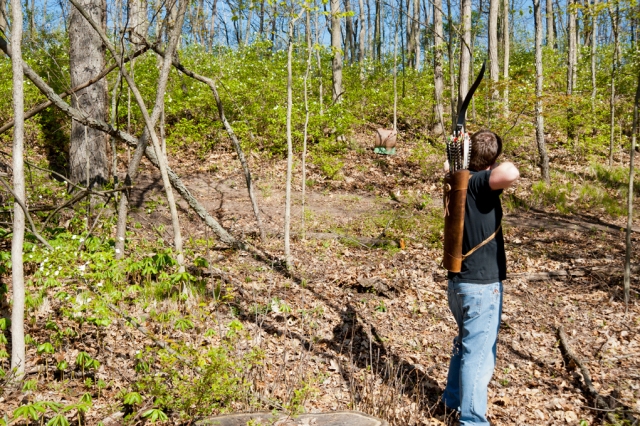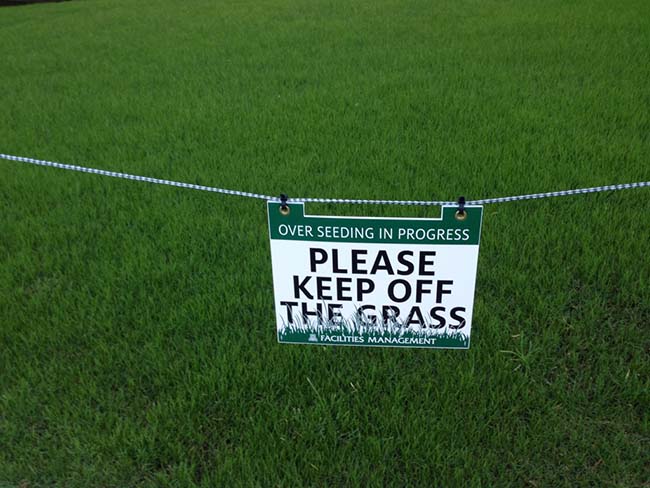
What is 3D archery? Generally, when an archer talks about 3D, they’re referring to shooting at three-dimensional life-like targets – normally made from foam and situated in such a way as to simulate a true-to-life hunting experience. At its inception, 3D was focused mainly on hunting practice, as such most of the targets were shaped like game animals, but 3D quickly evolved into a sport of its own, with rules, scoring, and a nearly limitless cornucopia of targets.

As such, 3D is a great way to get ready for an upcoming hunt, or to just have some fun. It can be practiced alone, with friends, or family. In fact, it’s common for young children to participate in 3D. It’s a great way to experience the outdoors (if shooting at an outdoor range) and gain experience in shooting your bow in a realistic situation.
Before you head out to the range, there is some basic equipment you should bring with you. That said, there’s no special 3D bow that you’ll need; just shoot the bow you’re most comfortable with or the bow you plan to hunt with. You should used field points (don’t shoot broadheads at 3D targets!), it’s a good idea to have a pair of sunglasses handy, some sunscreen, an arrow removal tool (just in case you hit a tree, a cheap arrow puller and target arrow release fluid are good ideas too), a decent quiver, a towel for your hands and gear, and some arrows. Many outdoor shoots can be a mile or more in length, so it’s a good idea to bring something to snack on as well as some bottled water, but please don’t litter.
Six arrows should be plenty, but feel free to carry as many as you need. There are many archers who will bring an extra dozen and leave it in their vehicle just in case they need them. If you plan on shooting for score, you’ll want to bring something to write with and on (sometimes that’s not needed, but it’s better to be safe than sorry). Misses do happen and arrows will be lost (arrows are a lot easier to find with lighted nocks). When you do miss the target, don’t take too much time looking for the lost arrow, as it will slow down the whole event.
Most ranges will charge a small fee for shooting, whether you’re competing or not. This money covers normal wear and tear on the targets and on the range.
On how 3D is scored; typically, the high score shots will be in the vital section of the animal you’re shooting at. There are two primary scoring formats used: ASA and IBO. The ASA, or the Archery Shooters Association, uses 14-12-10-8-5-0 scoring areas. The IBO, or the International Bowhunting Organization, uses 11- 10-8-5-0 scoring areas.
When shooting for score, one arrow is shot at each target; the score is determined by where the arrow enters the target. Below is an example of what the ASA and IBO scoring rings look like.

However, this scoring system does pose a problem in some situations. What if the animal is at an angle facing away from the shooter? Under normal circumstances a hunter would shoot the deer so that their arrow would hit midway between the front and rear legs, which would be a lethal, clean harvest. Despite being the most lethal shot in a real-world application, this shot would result in a score of 5 at a 3D shoot. Instead, the archer would need to aim as if they were trying to pass through the outer shoulder, which would result in a much higher score. Further, some targets will have multiple scoring areas marked. In which case, just ask which one is being shot at – if you’re shooting alone just use your best judgment.
Now, what happens if your arrow is on the 10 and the 12 mark? In most situations you get the higher score, if your arrow is touching it, then that’s your score. If you can’t see the scoring rings from the shooting stake, just aim for what would be the most natural lethal area. Some shooters opt to bring a good set of binoculars, but if you choose to bring binoculars remember to be courteous of other shooters and not take too long. There are also some archers who will bring reference cards of each target, so they know where to aim for the highest score.
Although many 3D courses are set outdoors, there are just as many indoor 3D ranges, which is nice when the weather gets too nasty for outdoor shooting. Most shoots will have between 20 and 30 targets arranged at different distances and positions. Usually traditional shooters will have a maximum distance stake at around 30 yards, but not always. If you’re participating in a tournament there will normally be club rules that you’ll have to obey in order to qualify (it might be a multiple day shoot or there might be different classes). During outdoor shoots be prepared to shoot off of elevated platforms, down hillsides and through brush. Some areas might be highly wooded and other areas might be in wide-open fields. Most targets will not have any indicator of what the distance to the target is, which gives the instinctive shooter a real advantage.
Indoor 3D ranges usually have a single line where all archers shoot from. Generally, archers are grouped by class and skill level. Targets can be as close as 2 yards or as far as 50 yards, normally distance is only limited by the venue.

Outdoor ranges, in my opinion, can be a lot more fun as they are usually a walk-through course (just like mini-golf). Normally, there will be three or four archers per lane – your group will finish one target and then move on to the next. Be aware if you or your group is moving slowly – it’s courteous to let faster archers pass you. Each class and skill level will have a designated stake to shoot from – most shoots are operated via the honor system, so no cheating. The shooter is normally required to touch the stake with at least one part of their body (i.e. foot or a knee) when shooting.

Although each club will have its own rules and restrictions, here are some basics to remember:
- Although archery is generally a safe sport, it can be dangerous, so stay smart and stay safe. Know what you’re shooting at. Know what’s behind your target. Make sure there are no children about to dart out in front of you or behind your target. Be aware of other shooters at all times.
- Try not to talk or be disruptive while others are shooting. If you’ve brought children, make sure they’re not making too much of a ruckus.
- Take your time, but don’t stall other shooters. Some people like to really take their time, others love to move quickly – be courteous either way. If you’re a slower shooter, then let the faster archers “shoot through.”
- Avoid foul language. These are often family activities and no one wants their children exposed to that.
- Feel free to bring something to snack on and some water to drink (in fact, I’d encourage it), but don’t litter.
- When you miss a target, don’t take all day looking for it, as it will slow down the entire event. Misses will happen (so be prepared) and arrows will be lost.
- You might want to bring a ‘throw away’ arrow for novelty targets, such as steel or iron elks.
- Have fun!
By Jason D. Mills














.jpg)

Great intro to 3-D. Thanks for the post!